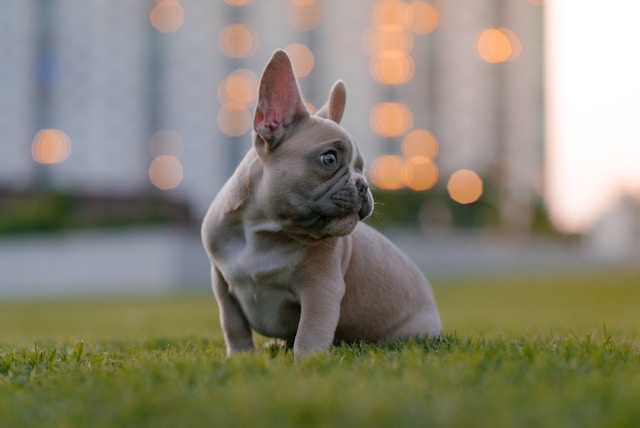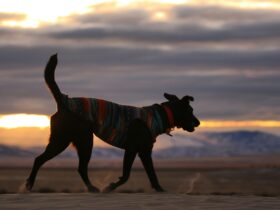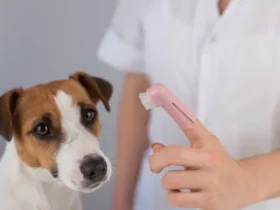If your dog has had a run-in with a skunk, you’re likely dealing with a strong, persistent odor that can be challenging to remove. Skunk spray, while a defense mechanism for the skunk, is notorious for its pungent and lingering smell. Fortunately, there are effective methods to tackle this odor and get your furry friend smelling fresh again. In this blog, we’ll guide you through the steps to take if your dog gets sprayed by a skunk, including preventive measures, DIY solutions, and professional help.
Understanding Skunk Spray
Skunk spray is composed of sulfur-containing compounds called thiols (also known as mercaptans) that give it its distinctive, unpleasant smell. The spray is an oily substance that can cling to fur and skin, making it difficult to remove. Here’s why skunk spray is so challenging to deal with:
1. Strong Odor
- Thiols: These sulfur compounds are highly odorous and can be detected by the human nose at very low concentrations.
- Persistence: The smell can linger for days or even weeks if not treated properly.
2. Oil-Based Nature
- Adherence: The oil in the spray allows it to cling to fur, skin, and other surfaces, making it harder to wash away with water alone.
Immediate Steps to Take
If your dog has been sprayed by a skunk, acting quickly can help minimize the odor and prevent it from setting in. Follow these immediate steps:
1. Keep Your Dog Outside
- Avoid Indoor Odor: To prevent the skunk smell from spreading indoors, keep your dog outside or in a well-ventilated area until you can address the issue.
2. Avoid Water Initially
- Don’t Rinse with Water: Avoid rinsing your dog with water before using a proper skunk odor removal solution. Water can spread the oil and make the situation worse.
DIY Skunk Odor Removal Solutions
Several homemade remedies can help neutralize skunk odor effectively. Here are the most popular and proven methods:
1. Hydrogen Peroxide Solution
Ingredients:
- 1 quart (4 cups) hydrogen peroxide (3% solution)
- 1/4 cup baking soda
- 1 teaspoon liquid dish soap
Instructions:
- Mix Ingredients: Combine hydrogen peroxide, baking soda, and dish soap in a large bowl or bucket. Stir until well mixed.
- Apply Solution: Wearing gloves, apply the mixture to your dog’s fur, avoiding the eyes, ears, and mouth.
- Let It Sit: Allow the solution to sit on the fur for about 5-10 minutes. Do not leave it on longer as it may bleach the fur.
- Rinse Thoroughly: Rinse your dog thoroughly with lukewarm water.
- Repeat if Necessary: You may need to repeat the process if the odor persists.
2. Tomato Juice Bath
Ingredients:
- 1-2 quarts of tomato juice
Instructions:
- Apply Tomato Juice: Pour the tomato juice over your dog’s fur, making sure to cover the affected areas.
- Massage In: Gently massage the juice into the fur and skin.
- Let It Sit: Allow the tomato juice to sit for 10-15 minutes.
- Rinse Thoroughly: Rinse with lukewarm water and follow up with a regular dog shampoo.
3. Baking Soda and Vinegar
Ingredients:
- 1/2 cup baking soda
- 1/4 cup white vinegar
- 1 cup water
Instructions:
- Mix Ingredients: Combine baking soda, vinegar, and water to form a paste.
- Apply Paste: Apply the paste to your dog’s fur, avoiding sensitive areas.
- Let It Sit: Leave it on for 5-10 minutes.
- Rinse Thoroughly: Rinse with lukewarm water.
Commercial Skunk Odor Removers
If DIY solutions aren’t effective or you prefer a ready-made option, several commercial skunk odor removers are available. Look for products specifically designed to neutralize skunk odor. Popular options include:
- Nature’s Miracle Skunk Odor Remover: A well-regarded product that neutralizes skunk odor and is safe for pets.
- Skunk-Off: A product designed to break down the skunk’s oils and eliminate the smell.
- Rocco & Roxie Professional Strength Stain & Odor Eliminator: Effective for both skunk odor and stains.
Instructions:
- Read Labels: Follow the manufacturer’s instructions carefully for the best results.
- Apply as Directed: Use the product according to the instructions, applying it to the affected areas.
- Rinse Thoroughly: Ensure all product residue is washed away to avoid any skin irritation.
Additional Tips and Precautions
To ensure the safety and effectiveness of skunk odor removal, consider the following tips:
1. Protect Your Dog’s Eyes, Ears, and Mouth
- Avoid Contact: When using any solution, be cautious not to get it in your dog’s eyes, ears, or mouth. Rinse these areas with water immediately if contact occurs.
2. Test for Sensitivity
- Patch Test: Before applying any solution broadly, test a small area of your dog’s skin to check for any adverse reactions.
3. Prevent Future Encounters
- Keep Dogs on Leashes: When walking in areas where skunks are known to live, keep your dog on a leash to avoid potential encounters.
- Secure Trash: Ensure trash cans and other food sources are secured to prevent attracting skunks to your yard.
4. Professional Help
- Groomers: If the odor persists or you’re unsure about the removal process, consider consulting a professional groomer with experience in skunk odor removal.
- Veterinarian: If your dog shows signs of irritation, discomfort, or skin problems after a skunk encounter, consult your veterinarian.
Long-Term Odor Control
Even after removing the skunk spray, the smell may linger in your home. To address lingering odors:
1. Clean Affected Areas
- Wash Fabrics: Wash any fabrics or bedding that may have come into contact with the skunk spray.
- Disinfect Surfaces: Use an enzymatic cleaner to disinfect surfaces and neutralize odors.
2. Air Out Your Home
- Ventilation: Open windows and use fans to ventilate and air out the affected areas.
3. Use Odor Neutralizers
- Air Fresheners: Consider using air fresheners or odor-neutralizing sprays to help combat any remaining smells.
Conclusion
Dealing with a skunk-sprayed dog can be a challenging and unpleasant experience, but with the right approach, you can effectively remove the odor and get your pet back to their fresh self. By acting quickly, choosing the right cleaning solutions, and following proper care and precautionary measures, you can manage the situation and minimize the impact of skunk spray.











Leave a Reply